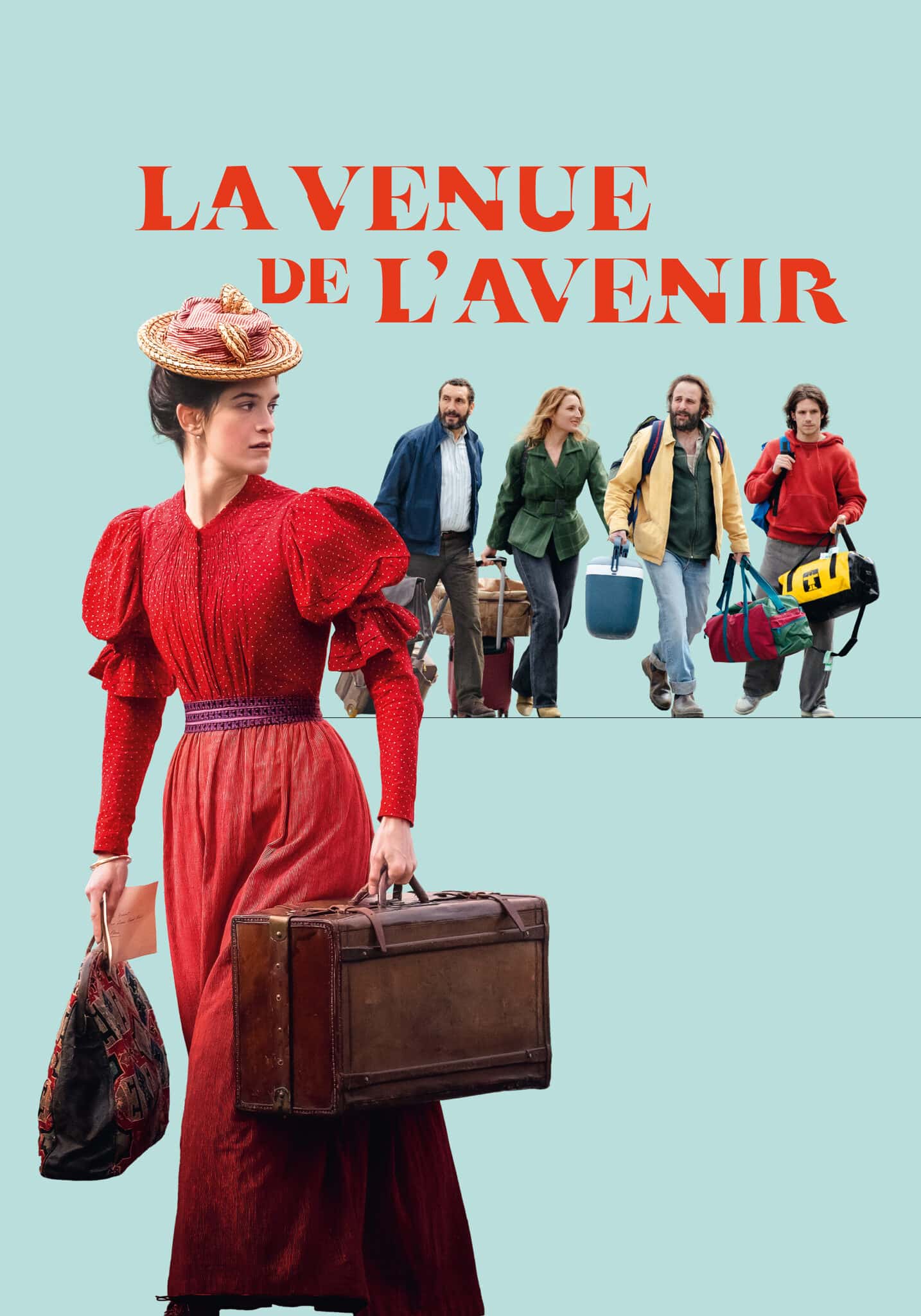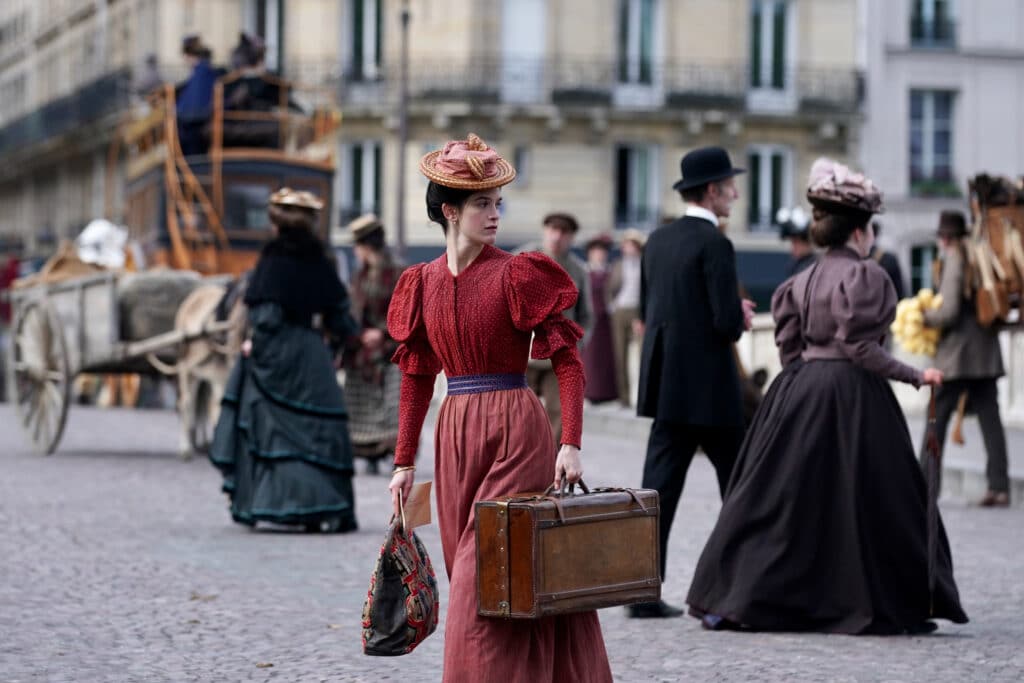Film The Coming of the Future by Cédric Klapisch: a journey through impressionist past and family legacy
Screened tonight at the Cannes Film Festival, The Coming of the Future by Cédric Klapisch presents itself as a sweeping tale of art, time, and family.
What if family were the people we meet along the way?
My daughter always says: “Whenever a Cédric Klapisch film is released, I don’t hesitate, I run to the cinema!” That’s exactly what I did tonight with The Coming of the Future, and I don’t regret it.
A story across eras
What truly connects us? A painting, a photo, a memory? In his film, Klapisch creates a sensory fresco that binds time and people together. From a Parisian museum to an abandoned house, from Adèle in 1895 to Seb in 2025, life paths intersect and echo each other. Klapisch questions what family means today, reminding us that art, memory, and connection can transform our trajectories.
An unexpected inheritance, a journey between 1895 and 2025: synopsis
In 2025, around thirty relatives discover they are to inherit a house abandoned since 1944.
Four of them—Seb, Abdel, Céline, and Guy—are tasked with inspecting it. These distant cousins uncover hidden treasures inside the house. They follow the traces of mysterious Adèle, who left her native Normandy at 20. She arrived in Paris in 1895, amid an industrial and cultural revolution. The confrontation between these eras will challenge their ideals and their present.
Suzanne Lindon
In this “detective” comedy, time cannot be caught—but it can be passed on
It begins in 2025 at the Musée de l’Orangerie. Before Monet’s Water Lilies, Seb, a young photographer, films his influencer girlfriend. He adjusts the painting’s tones to enhance the shot. Klapisch then takes us to a farm threatened by developers. He references Silencio, an exclusive Paris nightclub, and critiques our obsession with image and personal branding.
A Paris infused with art
Klapisch celebrates Paris, his cinematic muse since Le Péril jeune, Chacun cherche son chat, The Russian Dolls, and Someone, Somewhere. Here, the city is a living organism, crossed by emotional currents. This visceral bond finds new form: a layered Paris through time, seen through a contemporary photographer’s lens and a young woman’s gaze from 1895.
Streets, faces, cafés, and lights are characters in their own right. Paris of 1895, meticulously recreated, speaks to the Paris of 2025, caught in its rhythm and contrasts.
Costumes by Pierre-Yves Gayraud and sets by Marie Cheminal support Alexis Kavyrchine’s cinematography, evoking autochromes, impressionist paintings—Monet, Renoir, Degas, Morisot, Caillebotte, Boudin—and the documentary aesthetic of photography pioneers: Nadar (portraits), Atget (empty streets), Le Gray (composed landscapes). Their influence permeates every shot.
Anne-Sophie Bion’s editing ensures smooth transitions between timelines.
Rob’s original score, inspired by Debussy, bridges epochs with electronic layers and classical orchestration, ending on a guitar version of Clair de lune—a lyrical echo between past and present.
What the past whispers, the present can still hear
Suzanne Lindon portrays Adèle, a young woman determined to find her mother, Odette (Sara Giraudeau). Her path crosses with dreamer-painter Anatole (Paul Kircher) and observant photographer Lucien (Vassili Schneider).
In 2025, Seb (Abraham Wapler), a photographer in search of meaning, meets Céline (Julia Piaton), overworked and lovelorn. Guy (Vincent Macaigne), a jaded cousin, and Abdel (Zinedine Soualem), a nearing-retirement teacher, complete the group. Fleur (Pomme) brings musical sensitivity, while Calixte (Cécile de France) embodies a scholarly museum curator. Each explores the ties between memory and identity. Abdel, a French teacher, passes on knowledge and memory, bridging generations.
Connections are everywhere. Life revives through passion: a teacher with his students, a beekeeper with bees, an artist with art, a daughter with her mother, a grandson with his grandfather…
The condition of women
Adèle, uneducated, leaves Normandy for Paris in 1895, seeking her mother. In a society reducing women to wives or objects, her departure is a rupture. She walks alone, driven by the need to understand her origins. Through her, Klapisch depicts progressive emancipation through choices and actions.
In 2025, this extends to Céline and female artists like Fleur. Women forge chosen bonds, transmit knowledge, and shape active memory—a lineage built through action, not passive inheritance.
Photography, absence, and family transmission
This sentence echoes like a revelation: “In just two minutes, more photos are taken globally today than in the entire 20th century.”
This sensitivity to visual memory permeates the film. It’s rooted in the director’s own history:
“My maternal grandfather, Robert Meyer, took many photos. He left us beautiful albums. He was arrested in 1942 as a Resistance fighter, deported with my grandmother, and murdered at Auschwitz. Though I never knew them, their absence weighs heavily—and is somehow ‘present’ in my life. I’ve always felt they were here, thanks to those photo albums.”
This personal memory infuses the film with intimacy. It grounds the meditation on memory, how images unite the living and the absent, and embeds the narrative in a political and artistic genealogy.
What The Coming of the Future by Cédric Klapisch passes on
From his earliest work, Klapisch has embraced youth—past and present—because anything is still possible. That hope for a better world makes us return to his cinema. His characters briefly become our own chosen family, and we leave the theatre moved and uplifted.
The Coming of the Future also recalls Starbuck by Ken Scott: strangers become family. And like in The Fabelmans by Steven Spielberg, art becomes a familial force.
There’s no nostalgia here. WWI looms, with its trenches awaiting this exuberant youth. Shadows of WWII creep in too, already present in Klapisch’s family story.
The film reminds us: every legacy carries its wounds.
This is not just inheritance, but unchosen transmission: an unnamed absence, a forgotten war, a photo left in a drawer. Life’s energy collides with the weight of silence, broken gestures, unspoken words.
Each character carries a burden they didn’t choose: a house to sort, an old photo to decipher, a family memory they discover as they inherit it. Klapisch captures these incomplete transmissions—because they connect us, bind us, and shape us.
In cinemas starting today.
Official trailer of The Coming of the Future
Written by Cédric Klapisch and Santiago Amigorena
Starring: Suzanne Lindon (Adèle), Abraham Wapler (Seb), Vincent Macaigne (Guy), Julia Piaton (Céline), Zinedine Soualem (Abdelkrim), Paul Kircher (Anatole), Vassili Schneider (Lucien), Sara Giraudeau (Odette), Cécile de France (Calixte), Pomme (Fleur), Raïka Hazanavicius (Rose).
And you, what legacy do you carry?
Did this film move you? Share your thoughts in the comments.
#filmklapisch #festivalcannes2025 #cinemamay2025 #cinematicmemory #legacy #familyhistory



